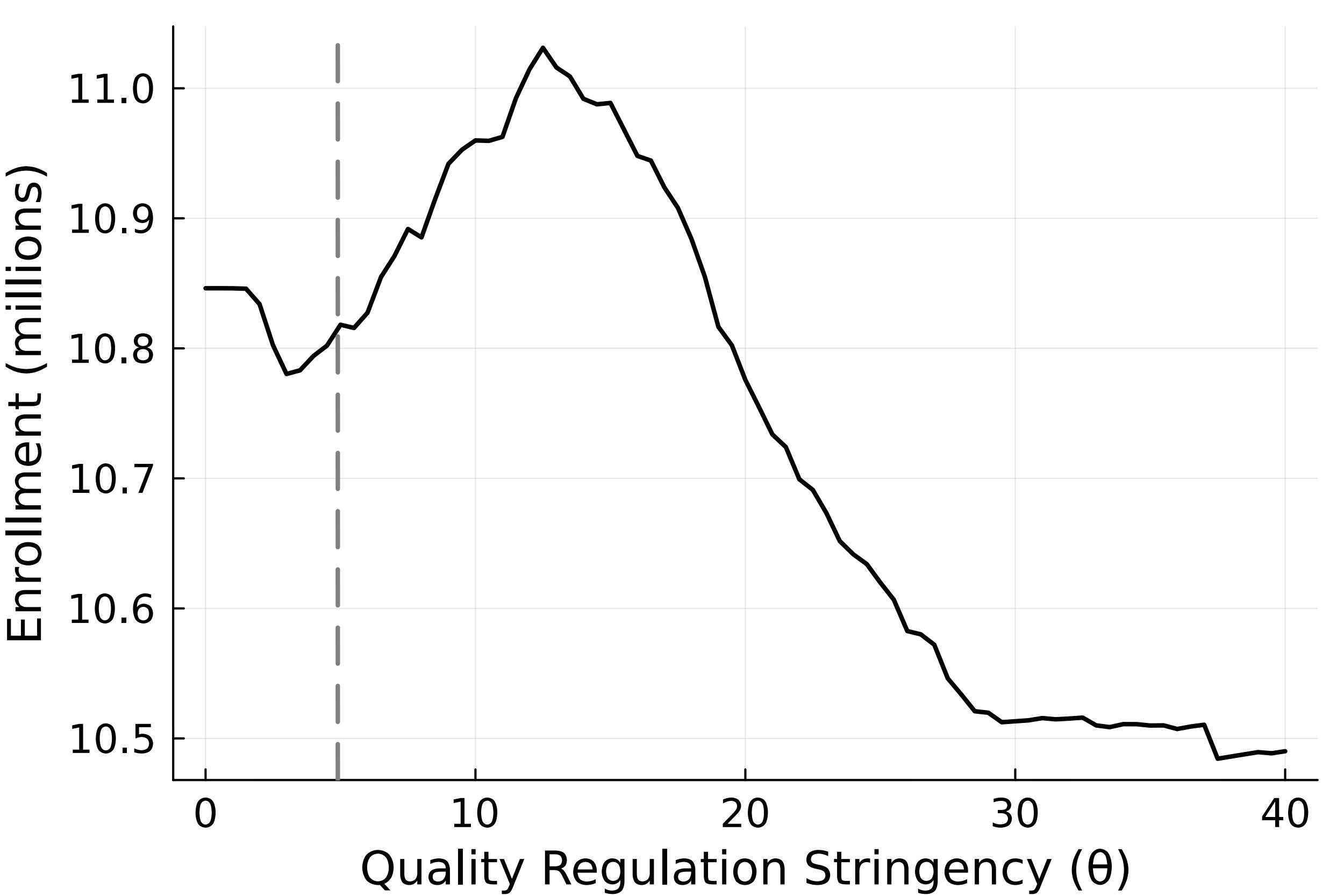Working papers
Equilibrium Effects of Quality Regulation of For-Profit Higher Education (Job Market Paper)

This paper studies the equilibrium effects of the Gainful Employment Rule (GER), the largest quality regulation policy in the U.S. higher education market. The rule required for-profit institutions to meet quality standards to retain access to their primary source of revenue: federal student aid. Using administrative data and an event-study design, I find that the GER increased for-profit exit rates by 5 percentage points, while surviving institutions reduced prices and enrollment by 4% and 20%, respectively. Untargeted competitors raised prices without enrollment losses, consistent with increased market power. Informed by these event-study estimates, I develop an equilibrium model of demand and supply with endogenous exit and a quality constraint to evaluate how counterfactual levels of regulatory stringency shape the distribution of value-added within an equity–efficiency framework. I show that tuning regulatory stringency can increase equity without reducing efficiency.
Work in Progress
Information Frictions and the Effectiveness of Need-Based Financial Aid: Evidence from Michigan’s Tuition Incentive Program (w. K. Ferrara-Gerson, K. Michelmore, N. Sotherland, K. Stange, and M. Thompson)
This project examines how information frictions shape the effectiveness of Michigan’s Tuition Incentive Program (TIP), historically the largest state aid program in Michigan. TIP provides a first-dollar scholarship to students from low-income backgrounds, identified through Medicaid participation, and is designed to reduce financial barriers to college enrollment. Despite these features, take-up remains far below eligibility, suggesting that information barriers substantially limit its impact. The study uses rich linked administrative data covering the universe of Michigan public high school graduates to analyze how TIP affects college enrollment, and graduation. This work adopts a regression discontinuity design to estimate causal effects, and develops a structural model of Bayesian learning and enrollment choice to quantify how imperfect information moderates these effects. This framework allows for counterfactual simulations that assess how enrollment and take-up would change if informational barriers were removed. This project contributes to the literature on financial aid by explicitly modeling the interaction between aid design and information constraints, highlighting how even generous programs can fail to achieve their objectives when potential recipients do not perceive or process key incentives.
Online Education and Markups in U.S. Higher Education
Pre-doctoral work
Educacion superior y subempleo profesional: ¿una creciente burbuja mundial? (with G. Yamada). Universidad del Pacifico, Working Paper
Valor de la informacion en educacion superior y efecto de la calidad universitaria en remuneraciones en el Peru (with P. Lavado, G. Yamada). Peruvian Economics Association, Working Paper